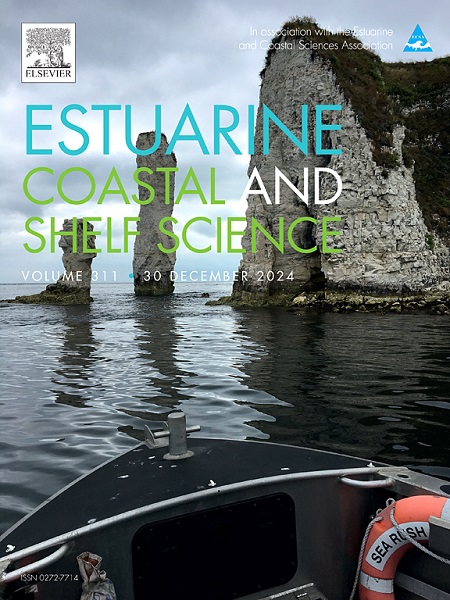Artificial structures that help prevent beach erosion create a sandy beach environment that facilitates the burial of debris
IF 2.6
3区 地球科学
Q1 MARINE & FRESHWATER BIOLOGY
引用次数: 0
Abstract
Vast amounts of marine debris continue to flow into the ocean every year, and there is concern about the negative economic, ecological, and aesthetic impacts of the debris. Coastal environments, including sandy beaches, accumulate debris stranded on the surface and buried in the beach substrate. In the Seto Inland Sea region of Japan, where the coast tends to erode, detached breakwaters have been installed as part of efforts to protect the coast, stop beach erosion, and promote sedimentation. Sandy beaches that form behind detached breakwaters tend to accumulate marine debris, and some debris that strands on the beach can become buried. The actual amount and distribution of debris buried on beaches and the mechanism responsible for its burial are unknown. Here, we show that there is considerable debris buried on beaches formed behind detached breakwaters. Much of that debris is buried in the berm after being trapped in the berm scarp and subsequently covered by windblown sand. Our findings demonstrate that detached breakwaters created for coastal protection have resulted in a coastal system that accumulates and buries much marine debris. Studies of the distribution, mechanism of burial, and dynamics of buried debris are still in the development stage, and little is known about the impact of buried debris on the environment and society. Efforts to address these knowledge gaps will be needed in the future.
求助全文
约1分钟内获得全文
求助全文
来源期刊
CiteScore
5.60
自引率
7.10%
发文量
374
审稿时长
9 months
期刊介绍:
Estuarine, Coastal and Shelf Science is an international multidisciplinary journal devoted to the analysis of saline water phenomena ranging from the outer edge of the continental shelf to the upper limits of the tidal zone. The journal provides a unique forum, unifying the multidisciplinary approaches to the study of the oceanography of estuaries, coastal zones, and continental shelf seas. It features original research papers, review papers and short communications treating such disciplines as zoology, botany, geology, sedimentology, physical oceanography.

 求助内容:
求助内容: 应助结果提醒方式:
应助结果提醒方式:


